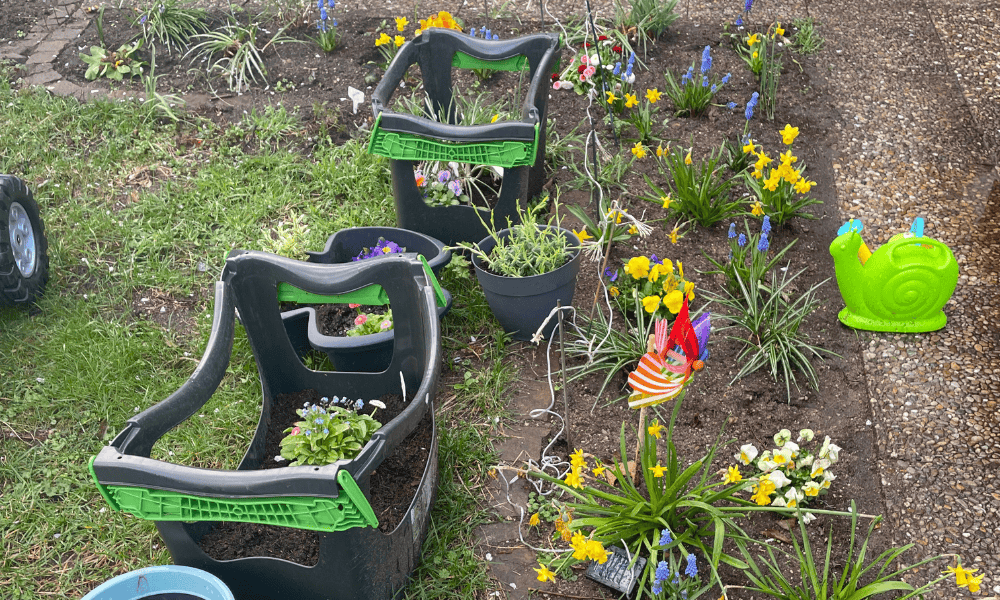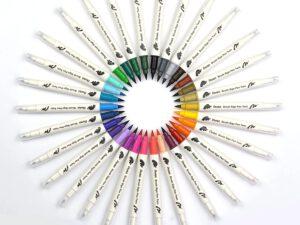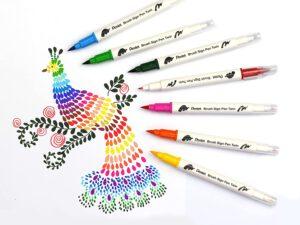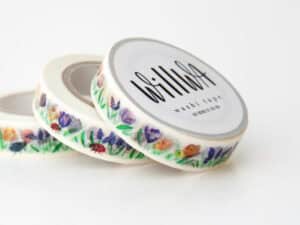If you’ve ever savored the vibrant taste of fresh herbs in a dish, you’ll know that their flavor, health benefits, and convenience are unparalleled. Whether you’re a novice in the kitchen or a seasoned cook, the thought of having a readily available stash of fresh herbs can be both exciting and daunting. This guide is tailored specifically to beginners, addressing your concerns and providing a comprehensive overview of how to cultivate your own indoor herb garden. More Posts for beginners guide in gardening can be found here.
We’ll walk you through every step, from choosing the perfect herbs for your taste buds to creating a thriving mini-garden right in your kitchen. No fancy equipment, no complicated jargon, just clear instructions and insider tips to help you unlock the magic of homegrown flavor. So grab your apron, get ready to get your hands dirty, and let’s turn your home into a haven of delicious, healthy herbs!
Table of Contents
Choosing Your Herbs
When it comes to choosing the right herbs for your indoor garden, there are several popular options that are not only suitable for beginners but also offer a delightful range of flavors and aromas. Herbs like basil, mint, chives, parsley, and thyme are excellent choices when starting your herb-growing journey. These herbs are relatively low-maintenance, versatile in their culinary uses, and can thrive in indoor environments with the right care.
Considerations
But before you grab the nearest seed packet, let’s consider a few things:
- Light Needs: Not all herbs are created equal when it comes to sun exposure. Some, like basil, crave the spotlight, while others, like mint, prefer a slightly more shaded corner. Choose your herbs based on the natural light available in your home.
- Growth Habit: Some herbs, like chives, are compact and bushy, while others, like thyme, are more low-growing and spreading. Consider the size and shape of your chosen herb when selecting pots and planning your indoor garden layout.
- Culinary Uses: Do you dream of whipping up fragrant Italian dishes? Or are you more of a savory herb enthusiast? Reflect on your cooking style and choose herbs you’ll actually use and enjoy.
- Buying vs. Seedling vs. Seeds: Now for the age-old question: buy ready-to-go seedlings, start with tiny seeds, or skip the wait and grab a store-bought herb plant? Each option has its pros and cons: seedlings is quickest option, but requires some initial care and transplanting, seeds are most affordable and rewarding, but takes longer for harvest, while store-bought herbs get instant gratification, but may be rootbound or require special care.
Ultimately, consider your budget, time constraints, and plant parenthood desires when choosing your herbs.

Setting Up Your Herb Garden / Spring Garden / Balcony Garden
After choosing your fragrant herb companions, it’s time to create their ideal indoor habitat. This requires ensuring that you have these three ingredients right for a thriving herb garden: light, containers, and soil.
- Light: Herbs thrive in well-lit environments, so it’s essential to choose a suitable location for your garden. Placing your herbs near a south-facing window will provide them with ample sunlight. If natural light is limited, consider using grow lights specifically designed for indoor gardening to supplement the light requirements of your herbs.
- Containers: The pot size should allow ample space for the herbs’ root systems to grow, so opt for containers that are at least 6-8 inches in diameter. Additionally, ensure that the containers have drainage holes to prevent waterlogging, which can lead to root rot.
- Soil: It’s recommended to use a well-draining potting mix specifically formulated for indoor plants. Avoid using garden soil, as it may compact in containers and hinder proper drainage, leading to root suffocation and waterlogged conditions. A high-quality potting mix will provide the necessary nutrients and aeration for your herbs to flourish indoors.
Planting and Care
When it comes to planting your indoor herb garden, you have the option of starting from seeds or using seedlings to kick-start your herbal oasis.
Seed Sowing
If you choose to begin from seeds, start by planting them at the recommended depth, usually indicated on the seed packet. Generally, small herb seeds should be sown at a shallow depth, around 1/4 inch, and lightly covered with soil. Keep the soil consistently moist but not waterlogged, as this can lead to seed rot. Once the seeds germinate, gradually reduce watering to avoid over-saturation, and provide ample light for their growth.
Seedlings Planting
If you choose seedlings, it’s important to handle them with care during transplanting. Gently remove the seedlings from their original containers, being mindful not to disturb their delicate roots. When planting them in their new pots, ensure that they have ample space to prevent overcrowding and competition for resources as they mature.
Watering
Herbs generally prefer slightly drier conditions, so it’s important to water them only when the top inch of the soil feels dry to the touch. Overwatering can lead to root rot and other issues, so it’s crucial to observe the moisture levels of the soil and adjust your watering frequency accordingly. Signs of overwatering include yellowing leaves and a musty odor, while under-watered herbs may have drooping or wilting leaves.
Fertilizing
In addition to watering, occasional light feeding with organic fertilizer will help nourish your herbs and promote healthy growth. Opt for organic options to avoid chemical build-up in the soil, which can affect the flavor and health benefits of your herbs.

Journaling Your Garden Progress
Do not forget to journal your progress, note down what is working for your balcony garden and what is not. Putting some stickers or doodling your progress to represent your spring garden on your pages will make for an interesting keepsake. You can use these products from our shop.
-
Original price was: 28,80 €.21,25 €Current price is: 21,25 €. inc. VAT Select options This product has multiple variants. The options may be chosen on the product page
-
22,50 € – 55,60 € inc. VAT Select options This product has multiple variants. The options may be chosen on the product page
-
3,40 € – 32,00 € inc. VAT Select options This product has multiple variants. The options may be chosen on the product page
Harvesting
Harvesting and enjoying your freshly grown herbs is a rewarding culmination of your indoor gardening efforts. Knowing when to harvest your herbs is crucial to ensure optimal flavor and freshness. Different herbs have varying harvesting readiness indicators.
For herbs like basil and cilantro, it’s best to harvest the leaves before the plants flower, as this is when they have the highest concentrations of essential oils, resulting in the best flavor. Herbs like thyme and rosemary can be harvested as needed once the plants have established themselves, with their woody stems offering a robust flavor.
Harvesting Techniques
For leafy herbs such as basil and mint, pinch off individual leaves at the stem to encourage bushier growth. For woody herbs like rosemary and thyme, use sharp scissors or pruning shears to snip off the stems just above a pair of leaves, which will encourage new growth. By harvesting in this manner, you’ll ensure the plants remain healthy and productive.
Conclusion
Embarking on the journey of cultivating your own indoor herb garden offers a myriad of benefits, from elevating the flavors of your culinary creations to providing a rewarding and therapeutic gardening experience. By carefully selecting suitable herbs, setting up the ideal environment, and nurturing your plants with proper care, you can enjoy a bountiful harvest of fresh, aromatic herbs right in the comfort of your home.
So, why wait? Take the first step towards creating your own indoor herb garden and savor the rewards of fresh, flavorful herbs at your fingertips.
For more insightful gardening tips, expert advice, and inspiring ideas, don’t forget to subscribe to our blog. Join our community of gardening enthusiasts and receive regular updates to help you nurture your green thumb and explore the wonderful world of indoor gardening. Happy gardening!
By Essi Karimi
About the Author:
Essy Karimi is an adventurous wordsmith who has a passion for reading, hiking, and writing (although she occasionally indulges in a friendly tango with procrastination)









